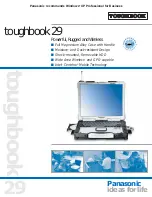
■ The charger is not waterproof. If you work in
rain or in a damp environment, an electric
shock may occur. The user may be injured
and the charger may be damaged.
► Do not operate it in the rain or in a
damp environment.
■ The charger is not protected against all ambi‐
ent conditions. If the charger is exposed to
certain ambient conditions, it may catch fire or
explode. This may result in serious injury to
people and damage to property.
► Operate the charger in an enclosed, dry
room.
► Do not operate the charger in a flammable
environment or in an explosive environ‐
ment.
► Do not operate the charger on a readily
combustible surface.
► Do not use and store the charger outside of
the specified temperature limits, 12.3.
■ The connecting cable is a trip hazard. People
may be injured and the charger may be dam‐
aged.
► Lay the connecting cable flat on the floor.
4.5
Safe Condition
The charger is in a safe condition if the following
points are observed:
–
Charger is undamaged.
–
Charger is clean and dry.
WARNING
■ If components do not comply with safety
requirements, they will no longer function
properly and safety devices may be rendered
inoperative. This can result in serious or fatal
injuries.
► Do not use a damaged charger.
► If the charger is dirty or wet: Clean the
charger and allow it to dry.
► Never attempt to modify the charger.
► Never insert objects in the charger’s open‐
ings.
► Never bridge the charger's contacts with
metallic objects (short circuit).
► Do not open the charger.
► Replace worn or damaged labels.
► If you have any queries: Contact a STIHL
servicing dealer for assistance.
4.6
Charging
WARNING
■ A damaged or defective charger may produce
an unusual smell or emit smoke during the
charging process. This may result in personal
injuries and damage to property.
► Disconnect the plug from the wall outlet.
■ The charger can overheat and cause a fire if
heat dissipation is inadequate. This can result
in serious or fatal injuries and damage to prop‐
erty.
► Do not cover the charger.
4.7
Connecting to the power supply
Contact with live components may occur for the
following reasons:
–
The connecting cable or the extension cord is
damaged.
–
The mains plug of the connecting cable or
extension cord is damaged.
–
The socket is not properly installed.
DANGER
■ Contact with live parts may result in electric
shock. This may result in serious or fatal injury
to the user.
► Make sure that the connecting cable, exten‐
sion cord and their mains plugs are undam‐
aged.
If the connecting cable or the extension
cord is damaged:
► Do not touch the damaged area.
► Disconnect the mains plug from the
power supply.
► Make sure your hands are dry before touch‐
ing the connecting cable, extension cord or
mains plugs.
► Plug the mains plug of the connecting cable
or extension cord into a properly installed,
shockproof socket with the correct fuse rat‐
ing.
► Install the charger with a ground fault circuit
interrupter (30 mA, 30 ms).
■ A damaged or unsuitable extension cable can
result in electric shock. There is a risk of seri‐
ous or fatal injury.
► Use an extension cable with the correct
WARNING
■ Overvoltage can occur in the charger if the line
voltage or frequency are incorrect during
charging. The charger may be damaged.
English
4 Safety Precautions
4
0458-967-0121-B






























